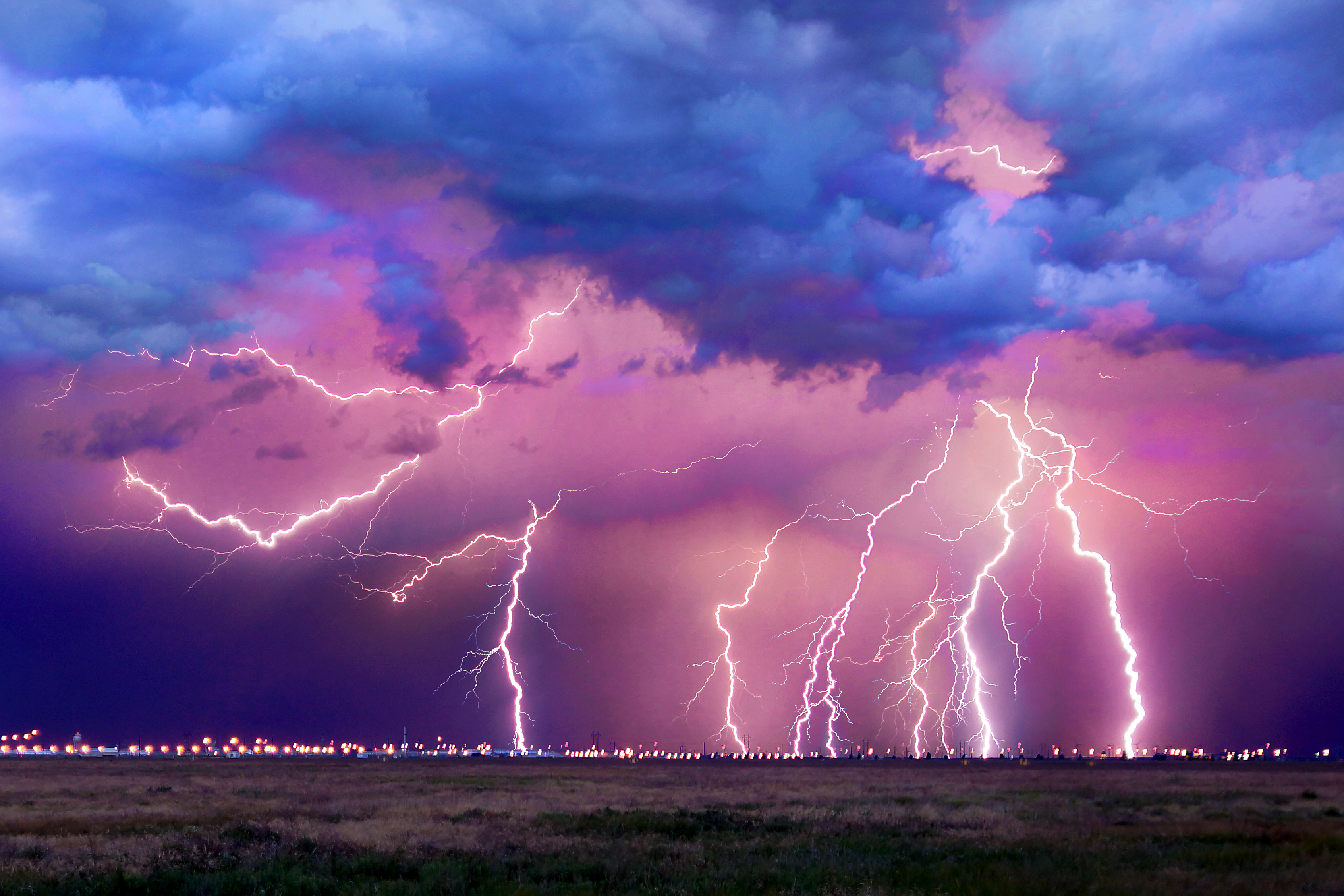Forecast calls for severe weather safety

Series of lighting detection photos of one storm that rolled across Pantex in August 2019 composited into one image.
Severe weather season is unpredictable, scary, and can be dangerous if not prepared. It is important to know what to do if severe weather hits. Y-12 and Pantex meteorological programs monitor weather conditions. Pantex Meteorologist Steve K. and Y-12 Meteorologist Matthew S. provided insight on how to prepare for spring and summer severe weather.
Understanding the importance between a tornado watch and warning is vital for the safety of yourself and others around you.
Steve said, “a tornado watch means that conditions are right for a storm to develop and produce a tornado. A tornado warning means that either a thunderstorm is rotating and could produce a tornado at any time, or a tornado has been sighted by law enforcement, a storm chaser, or some other trained storm spotter or meteorologist.”
In the case of a tornado warning, people should secure shelter. At home, people and pets should go into a basement or the most interior room of the house. Covering yourself with blankets and pillows will help protect you from debris should a tornado hit. Having access to a weather radio or electronic device where you can monitor weather reports is important.
There is always the possibility that a tornado could form while someone is driving.
“If you cannot drive away from the tornado, then get out of the car and get into a ditch or low place on the side of the road and cover your head,” said Steve. “Do not get underneath overpasses for protection as winds will actually be stronger underneath an overpass during a tornado as the air tries to squeeze itself into a smaller space under the overpass.”
Heavy rains and flash flooding are also common severe weather threats. The National Weather Service has the common saying, “Turn Around, Don’t Drown.” If you drive up to an area with cars already underwater, you are most likely going to face a similar fate if you try to drive into that water.
“Tires are filled with air and air does not like being below the water; it wants to be above it. So, with only 1-2 feet of flowing water, a car will start to float and become a really bad boat—with no steering mechanism to move it along,” said Steve.
Hail is also possible with thunderstorms.
Matthew said, “Hail is something we monitor for closely when severe storms roll through as it typically comes with more major weather outbreaks.” As with tornados, Steve emphasized that an underpass on a highway or interstate is the worst place to take shelter during a hail storm.
With rain and hail comes the potential for lightning. The sound of thunder can travel approximately 10 miles away from where a lightning strike occurs. Therefore, if you hear thunder, lightning is near and you should stay indoors.
“If you are outside and you feel your hair stand up or see the hair of someone else stand up, what you are witnessing (or feeling yourself) is electricity going up from the ground to meet static electricity coming down from the cloud,” Steve said. “You have enough time to crouch down like a catcher behind home plate as this will lift your heels off the ground to where only your toes are touching the ground. Put your hands over your ears and close your eyes. If you are struck by lightning in this position, the electricity will enter through your head or back and exit through your toes. If you are lying flat on the ground, then a greater amount of your body will suffer electrical burns from the lightning strike.”
When struck by lightning, people will often need immediate CPR due to the shock stopping the heart. Others may exhibit violent shaking and muscle spasms. Witnesses should call 911 immediately and start CPR, if necessary.
Pantex and Y-12 have meteorological towers and detection systems in addition to meteorologists monitoring weather at all times. Both meteorological programs collaborate with the National Weather Service and local stakeholders to keep up-to-date with the latest forecast.
Matthew said, “It is key to plan ahead and make sure coverage is there to protect materials, infrastructure, and most importantly, life safety.”
